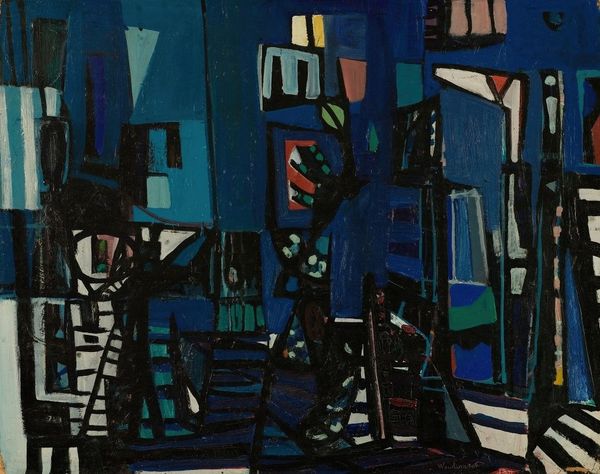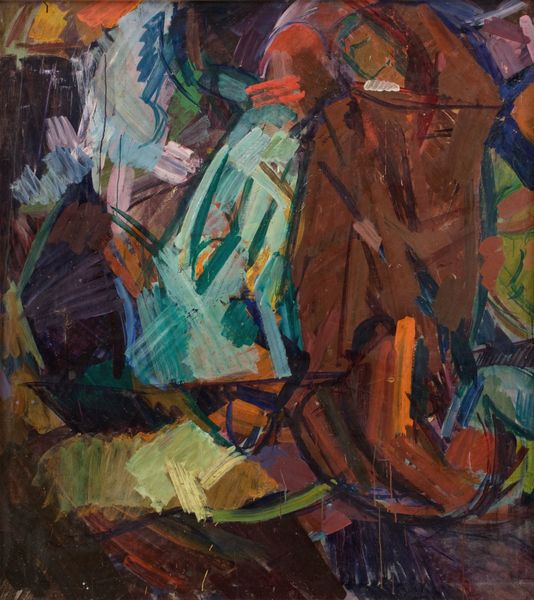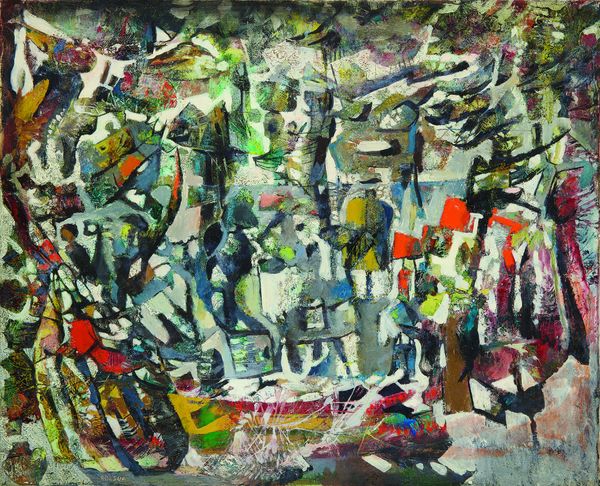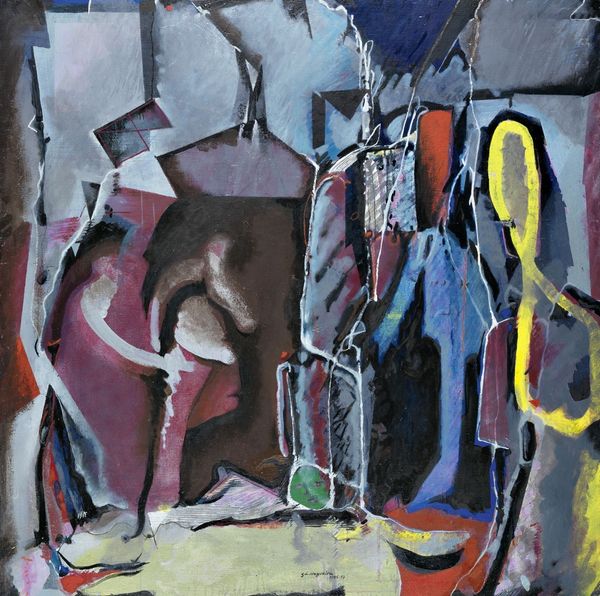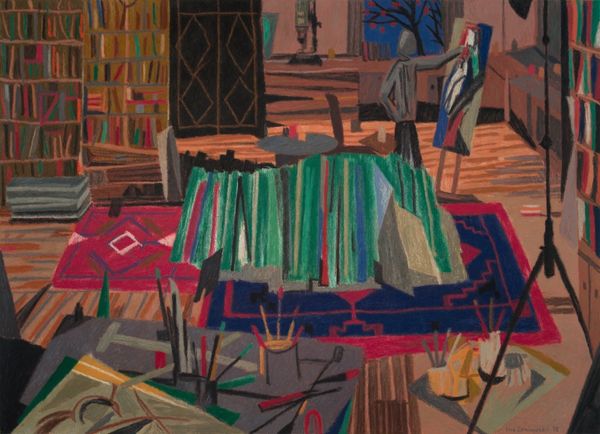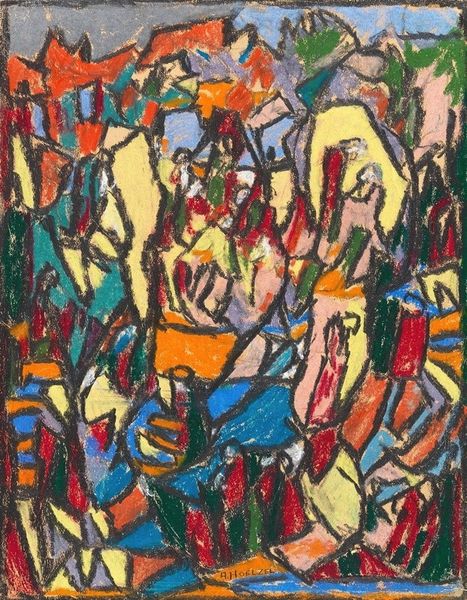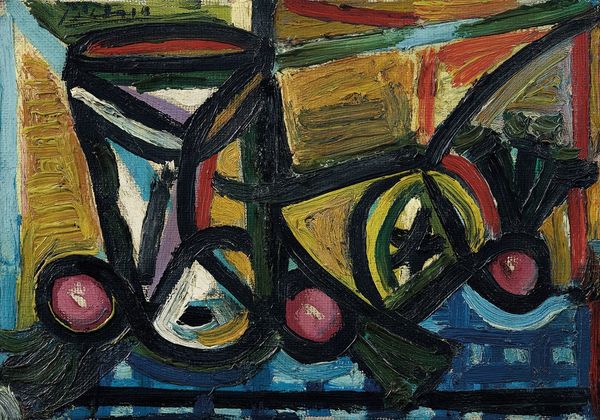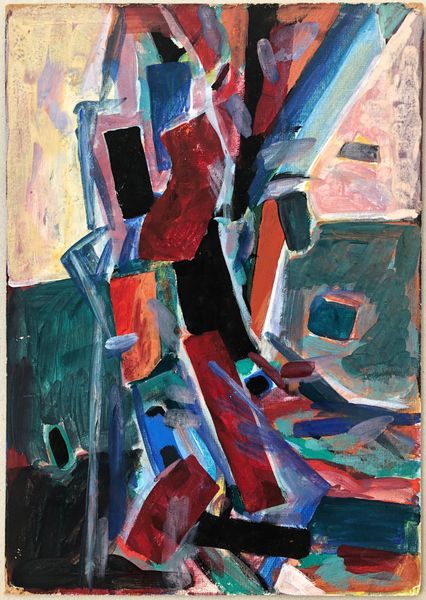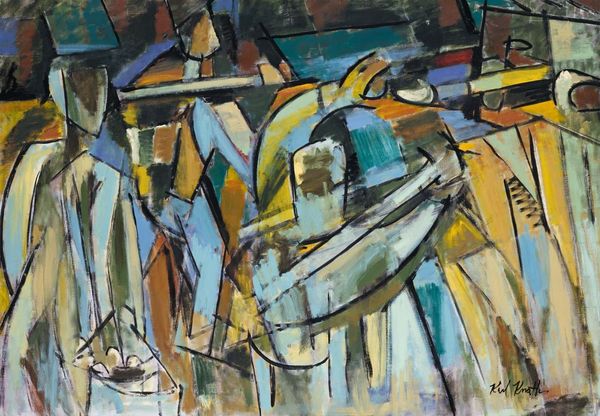
Copyright: Public Domain: Artvee
Jakob Weidemann’s painting, Interiør, presents us with a fascinating interplay of dark, brooding tones. The pervasive darkness punctuated by small pops of color suggests an interior space teeming with unresolved tensions. We see a scene from everyday life, a symbol, or rather, a memory of domestic comfort, but, at closer inspection, the lack of detail, and the gloominess, suggest an emotional weight. The domestic objects seem to be consumed by a sense of anxiety and melancholia. It is interesting to note how it echoes motifs we have seen across time and cultures: the darkness of the Baroque masters, the psychological unease of Edvard Munch. Weidemann's heavy brushstrokes and somber palette engage viewers on a deep, subconscious level. This use of darkness and light doesn't just depict a physical space; it embodies a psychological landscape. This interplay of light and shadow is a recurring symbol in art history, reflecting our collective subconscious and emotional states. It's a powerful testament to how symbols resurface, evolve, and take on new meanings across different historical contexts.
Comments
No comments
Be the first to comment and join the conversation on the ultimate creative platform.
